“Leveling Up” Your Instruction with the Banks Framework
Approx time: 35 min
This minicourse module is an abridged version of Project READY’s Module 19: “Leveling Up” Your Instruction with the Banks Framework. Follow the link to access the full module.
AFTER WORKING THROUGH THIS MODULE, YOU WILL BE ABLE TO:
- Describe the levels of Dr. James A. Banks’s framework for the integration of multicultural content.
- Reframe a content area, information literacy standard, or public library program theme into a lesson or unit plan at each level of this framework.
- Act in your library to “level up” existing program plans using Banks’s framework.
INTRODUCTION
As we discussed in the previous module, Culturally Sustaining Pedagogy is a valuable approach that helps us recognize the skills and knowledge our youth bring to the library with them as resources to honor and extend, but it can feel a bit abstract. Creating culturally sustaining instruction and programming requires us to value students’ traditional, heritage practices and their current, community practices. It can be hard to figure out how to do this.
Dr. James A. Banks has created a useful model that helps us evaluate our existing lessons and find ways to make them more culturally relevant and sustaining. The goal of Dr. Banks’s model is to enable youth from diverse racial and ethnic backgrounds to fully engage with and access curriculum or program content. It challenges the Euro-centric traditional curriculum and recognizes the contributions of BIPOC to society. It takes advantage of the cultural assets that youth bring to the library or classroom, and works toward prejudice reduction. This model is a powerful tool for dismantling structural racism in libraries.
Who is… Dr. James A. Banks

Dr. James A. Banks is regarded as the founder of the multicultural education movement. Now retired, he was a professor for 50 years and is the Kerry and Linda Killinger Endowed Chair in Diversity Studies Emeritus at the University of Washington, Seattle.
Optional: To learn more about Dr. Banks and his work, watch this video1, in which Dr. Banks is interviewed about multicultural education in America, or read one of his texts2 (we recommend starting with An Introduction to Multicultural Education).
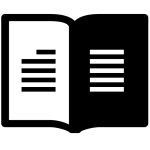 READ
READ
Read this brief journal article naming and describing the different levels of integration of multicultural content.
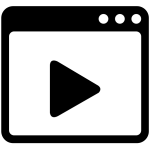 WATCH
WATCH
Watch this video in which Project READY staff offer a specific example of transforming an existing curricular unit at each level of integration, and how the transformed unit addresses information literacy skills and the American Association of School Librarians’ shared foundations.
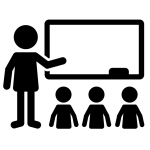 IMAGES OF PRACTICE
IMAGES OF PRACTICE
In the video below, three elementary educators – Christine Zaccardi (a school librarian), Sarah Mills (a Spanish teacher), and Martha Hayes (a magnet coordinator) – share a unit they collaboratively planned and taught that focused on citizenship, government services, and community. By connecting this content to equity issues in the students’ own community and guiding students in sharing their voices with county officials, these educators were able to reach Level 4 (the Social Action approach). Are there similar program opportunities in your community that you might transform using the Banks framework?
Optional Resource: The Padlet mentioned in the video can be accessed here.
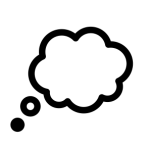 REFLECT
REFLECT
Brainstorm how you might transform the library program described below at each level of the Banks framework: contributions, additive, transformation, and social action.
Program Theme: Poetry
Current Program (Level 0): Participants read and discuss a famous poem and then write their own poem in the style of the model poem.
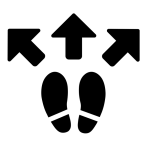 OPTIONAL: ACT
OPTIONAL: ACT
Select a program you currently offer and brainstorm how you might transform that program. Write notes on how you would transform it at each level: contributions, additive, transformation, and social action. Next, make a plan based on your brainstorming, then implement it.
Share your plan or the outcome of your program at your cohort’s next meeting, if applicable.
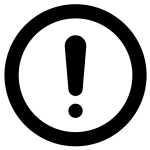 BUT WAIT!
BUT WAIT!
In this section, we address common questions and concerns related to the material presented in each module. You may have these questions yourself, or someone you’re sharing this information with might raise them. We recommend that for each question below, you spend a few minutes thinking about your own response before clicking “Show more” to see our response.
- Home Page
- Section 1: Foundations
- Module 1: Introduction
- Module 2: History of Race and Racism
- Module 3: Defining Race & Racism
- Module 4: Implicit Bias & Microaggressions
- Module 5: Systems of Inequality
- Module 6: Indigeneity and Colonialism
- Module 7: Exploring Culture
- Module 8: Cultural Competence & Cultural Humility
- Module 9: Racial and Ethnic Identity Development
- Module 10: Unpacking Whiteness
- Module 11: Confronting Colorblindness and Neutrality
- Module 12: Equity Versus Equality, Diversity versus Inclusion
- Module 13: Allies & Antiracism
- Section 2: Transforming Practice
- Module 14: (In)Equity in the Educational System
- Module 15: (In)Equity in Libraries
- Module 16a: Building Relationships with Individuals
- Module 16b: Building Relationships with the Community
- Module 17: Culturally Sustaining Pedagogy
- Module 18: “Leveling Up” Your Instruction with the Banks Framework
- Module 19: Youth Voice & Agency
- Module 20: Talking about Race
- Module 21: Assessing Your Current Practice
- Module 22: Transforming Library Instruction
- Module 23: Transforming Library Space and Policies
- Module 24a: Transforming Library Collections Part 1
- Module 24b: Transforming Library Collections Part 2
- Module 25: Lifelong Learning for Equity
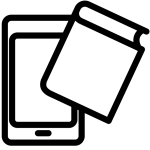 ADDITIONAL RESOURCES
ADDITIONAL RESOURCES
In this brief interview [PDF] with Dr. Banks, he explains the foundations of multicultural education and gives examples of what it looks like in the classroom.
These resources can help you begin to “level up” your existing lessons and units.
